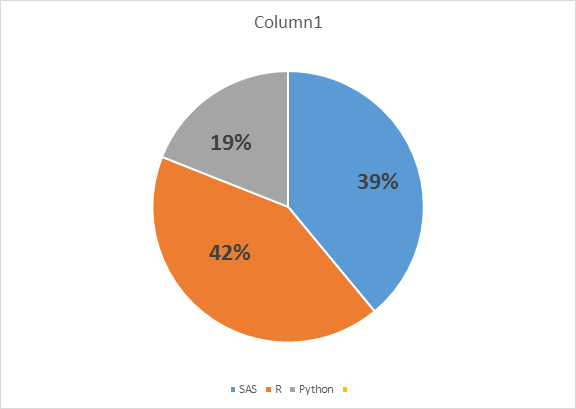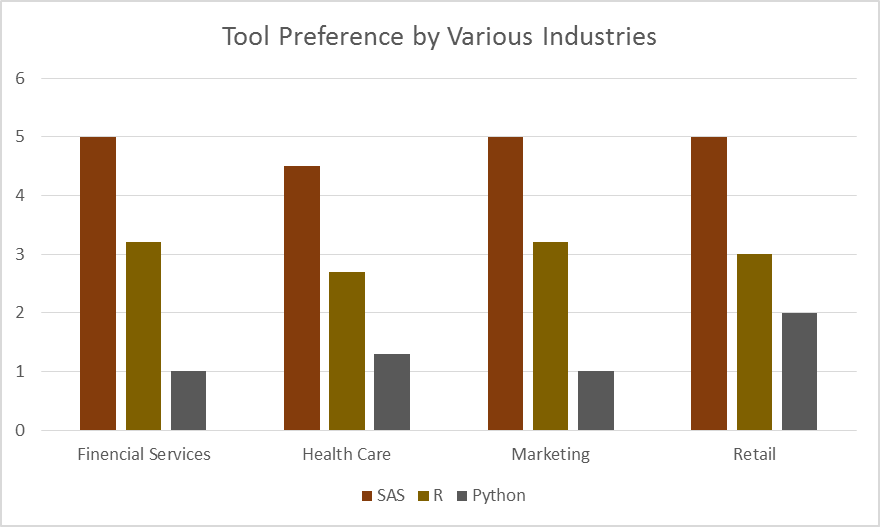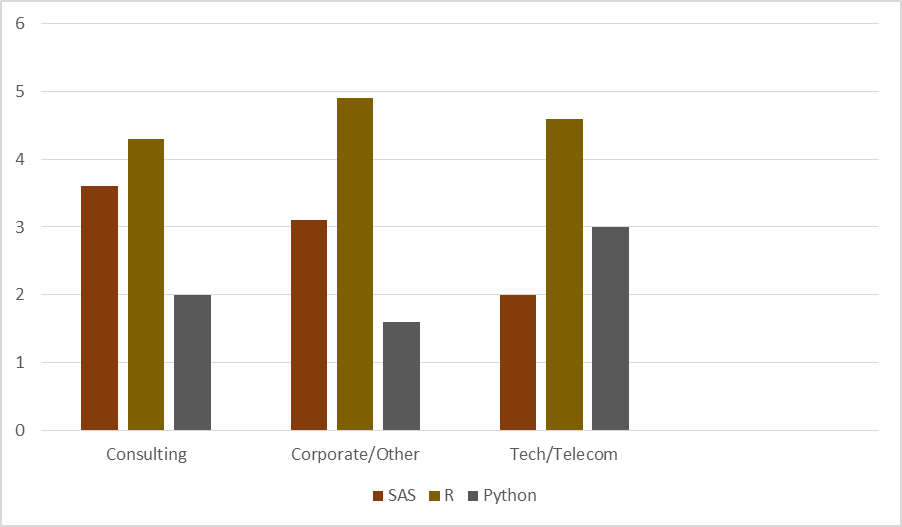SAS versus R versus Python
In this topic, we are going to compare all the three languages on various aspects to give you a clear perspective about market value and capabilities of these languages, so that you can choose the language with that you can move forward.
It is a well-known fact that to learn data analysis, you can use three important languages that are Python, R, and SAS.
If you are a fresher in the data science community and do not have experience in any of the languages mentioned above, then it is vital to be acquainted with at least one language.
First, let’s take a quick introduction to all three languages.
SAS
Speaking of Enterprise Analytics Space, SAS is currently an Undisputed Market Leader. It provides a vast array of statistical functions; it provides a well-supported technical support team. It also has a good GUI for People to pick it up faster than others.
R
R is an open source programming language. We can access it free and perform all data analysis tasks. It is the lingua franca for statistics.
Currently, R is the most widely used programming language, and it is also the first choice of data scientists. It is supported by a talented and vibrant community of contributors. R is also a part of university syllabus, that’s why taught in universities. It is deployed on critical business applications.
Python
Python is an open source, multi-purpose language. These days, it has become very popular in data science. The reason behind this, its immense data mining and vibrant community.
Now, we are going to compare on various aspects:
Features
Features of SAS
- Strong Data Analysis Abilities
- Flexible 4 Generation Programming Language (4GL)
- SAS Studio
- Support for Various Data Format
- Multiple host system
- Management
- Report Output Format
- Data Encryption and handling Algorithms
Feature of R
- Connectivity with many databases and data types.
- Effective storage and data handling facility.
- Statistical flexibility
- Remarkable data analysis
- The capability of scripting and interface with other languages
- Tools available to make predictions
- Statistical flexibility
Feature of Python
- Expressive Language
- Cross-platform Language
- Free and Open Source
- Extensible.
- Large Standard Library
- GUI Programming Support
- Integrated
Professional’s perspective
Let’s take a look at the use, on a professional’s perspective.
An international HR firm, asked about 1000 qualitative professionals about which language they prefer – whether it is SAS, R, or Python. Some of the results of the survey emerged like:

See the pie chart below:

Preference by various Industries
Let’s take a look at the preference by various industries.
Large companies mostly prefer SAS to provide better customer services and this is the reason behind SAS has an advantage within the marketing companies and financial services sector, where there is no concern on the budget for the selection of the tool.
On the other hand, Python and R are used in start-ups and mid-sized companies. Tech and telecom companies both require a large amount of unstructured data to get analyzed, and therefore, many data scientists of these sectors use machine learning techniques for which R and Python are more suitable.
In the graph, you can see the tool preference by various industries such as financial services, marketing, healthcare, retail etc.


Cost
SAS is a costly software used for commercial purposes and mostly by large corporations with a larger budget. However, R and Python are free to open source software, we can both download and learn it free.
Ease of Learning
There is no pre-requisite in programming for people to learn SAS because it has a simple GUI, which is easy to use. There is a provision to parse SQL code, by combining its native packages along with macros, it helps in learning SAS for those who have basic knowledge of SQL.
In Python to analyze data we need data mining libraries like Scipy, Pandas, and Numpy. The squeeze of that, we cannot code in a native Python language for data analysis.
The code written in Python libraries (Scipy, Pandas, and Numpy) is somewhat similar to the code of R libraries. Therefore, it is easy for people to learn Python, who already know about R in data science. For those who already know R, it is advisable to learn the basics of Python programming language before they begin to learn the Python Data Mining ecosystem.
Capabilities in Data Science:
SAS is known as a very efficient language for sequential data access and database access using SQL, which is well integrated. With the drag-and-drop interface, it is easy for people to make better statistical models faster.
R is preferred when the data analysis tasks need standalone servers. It is the best in memory analytics and a great tool to explore data.
Python libraries like Numpy, Scipy, Pandas, and Scikit allows it to be the second most popular programming language in data science just behind the R. You can also create beautiful graphs and charts with libraries such as Seaborn and Matlplotlib.
Community Support:
R and Python have huge community support online with mailing lists, stack overflows, and other user-contributed documents and codes.
An online active community that is regulated by community managers supports SAS.
